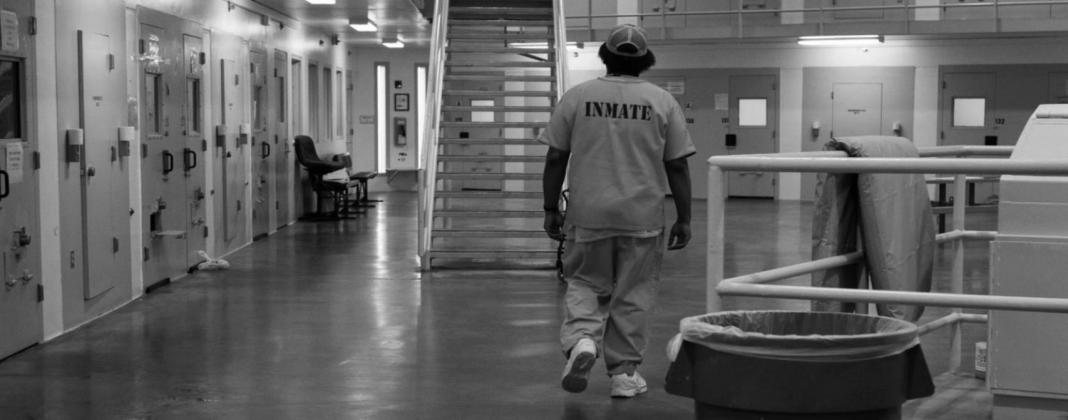After a 14-month hiatus, the agency reopened visitation for vaccinated prisoners on June 1. More than 60% of the state’s prison population was fully vaccinated as of June 30.
But as the more contagious delta variant surges throughout the South and Midwest, coronavirus outbreaks are once again emerging in Missouri’s prison system. State prison officials reported 358 active cases on Thursday, more than half of them at a women’s prison 100 miles northwest of St. Louis.
Missouri’s struggle to keep the virus out of its prisons could foreshadow what’s to come in Oklahoma, where active cases in prisons remain low but testing has dropped significantly. Just 51 prisoners were tested for COVID-19 between June 20 and July 17 with one test coming back positive, state data shows.
Prison medical staff continue to test for possible symptomatic cases but are no longer testing fully vaccinated prisoners before they’re transferred or released from custody, which likely explains the drop in testing, corrections department spokesman Lance West said.
As of July 12, approximately 58% of Oklahoma prisoners had been fully vaccinated against COVID-19. The agency is no longer keeping track of how many of its staff are vaccinated.
Oklahoma’s corrections system has mostly resumed normal operations over the past two months. Family visitation was reinstated for all prisoners in April and volunteers have been allowed in prisons since early May. Masks have been optional for prisoners, staff and visitors, regardless of their vaccination status, since early June.
The pandemic hit Oklahoma prisons, where many of the incarcerated live in dormitory-style housing units not conducive to social distancing, especially hard last fall and winter. More than 7,400 state prisoners have tested positive for COVID-19 and at least 52 have died since April 2020.
Vaccines Available To Prisoners
Medical staff at the Lexington Assessment and Reception Center are offering the one-dose Johnson & Johnson vaccine to new, unvaccinated prisoners as part of the intake process. Other prisoners who initially rejected the vaccine can request a shot by filling out a medical request form or speaking to staff in-person.
Nearly 13,000 prisoners have received at least one COVID vaccine dose, up slightly from 11,800 in mid-May. West said the corrections department is encouraging unvaccinated prisoners to consider the threat of the delta variant and get inoculated.
As daily vaccinations plummet and the delta variant becomes the predominant COVID strain, Oklahoma is seeing a significant increase in coronavirus cases and hospitalizations. The state health department reported 5,799 active cases on July 21, up from 2,201 on July 6. COVID-19 related hospitalizations have nearly tripled over the past three weeks.
During a Tuesday press conference, members of the Healthier Oklahoma Coalition said case numbers and hospitalizations will continue to climb if the state’s vaccination rate doesn’t improve. As of Monday, 50% of Oklahomans over 18 were fully vaccinated while 58% had received at least one dose. Vaccination rates are lowest in the Southeastern corner of the state.
“The situation really is looking grim, with a greater number of cases and hospitalizations than I expected for summer,” said Aaron Wendelboe, an epidemiologist and professor at the OU College of Public Health. “Currently I’m modeling a transmission rate to be about 2.9, which means on average each infected person with COVID is spreading it to 2.9 people. For contrast, at the beginning of June, I was modeling a transmission rate of two.”
The virus is spreading most quickly in areas neighboring Arkansas and Missouri, health experts said. One state prison, the Northeast Oklahoma Correctional Center in Vinita, sits just 40 miles west of the Missouri border.
“We highly suspect that the Delta variant is pushing those numbers up in the Northeastern quadrant of the state,” said Mary Clarke, president of the Oklahoma State Medical Association. “That’s going to continue throughout the state and move westward, and the only way to mitigate that is to get vaccinated.”
Outreach Boosts Prison Vaccination Rates
For more than a year, prison officials relied on mask mandates and movement restrictions to try and slow the spread of COVID-19.
Those measures could again become necessary if cases start rising, said Meghan Peterson, director of the University of North Carolina’s COVID Prison Project. But in states that have squashed misinformation and convinced prisoners to get vaccinated, future lockdowns appear unlikely.
“What’s really critical right now is making sure we’re vaccinating as many people as possible to avoid having to put restrictions back into place,” Peterson said, adding that prolonged lockdowns negatively impacted prisoners’ mental health.
Using a combination of incentives and targeted campaigns, several U.S. states have achieved significantly higher vaccination rates inside of their prisons than outside.
In North Dakota, prison officials led town-hall-style informational meetings and tied the return of in-person visitation to vaccination rates. Rhode Island’s corrections department asked formerly incarcerated people to help them come up with an informational campaign. More than 75% of prisoners in both states have been fully vaccinated.
Outreach in prisons is especially important because the incarcerated don’t have the same access to information as people on the outside, Peterson said. She said some prison systems have made the mistake of showing up one day with vaccine doses and writing off those who refused them.
“Rather than accepting that people are hesitant as a static state, we should think of people as being in deliberation,” she said. “Maybe people just need some more information or need to have a conversation with someone where they actually make the decision to be vaccinated.”
West said Oklahoma’s corrections department has displayed information about the vaccine in commonplace televisions and sent memos encouraging unvaccinated prisoners to get the shot.
Officials will likely reintroduce restrictions if outbreaks emerge at certain facilities.
Keaton Ross is a Report for America corps member who covers prison conditions and criminal justice issues for Oklahoma Watch. Contact him at (405) 831-9753 or Kross@Oklahomawatch.org. Follow him on Twitter at @_KeatonRoss.
Oklahoma Watch, at oklahomawatch.org, is a nonprofit, nonpartisan news organization that covers public-policy issues facing the state.

